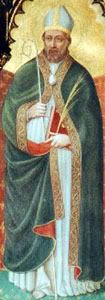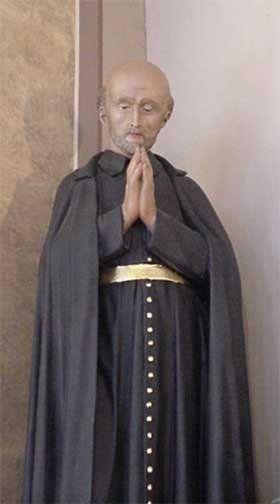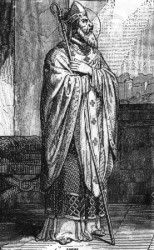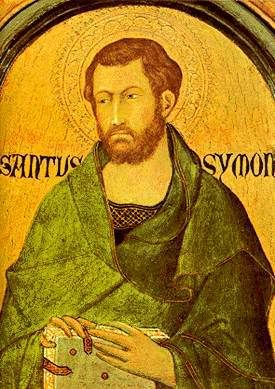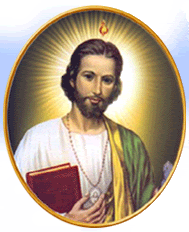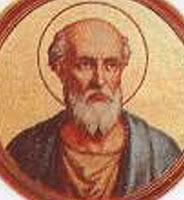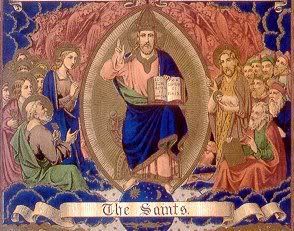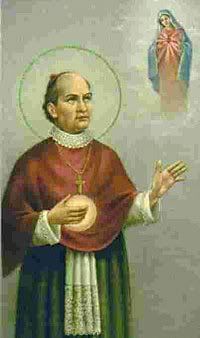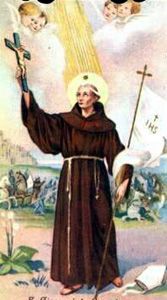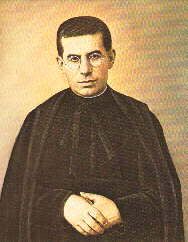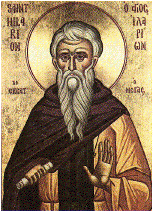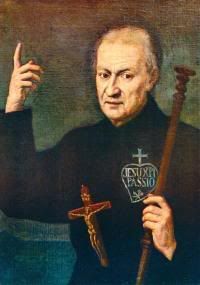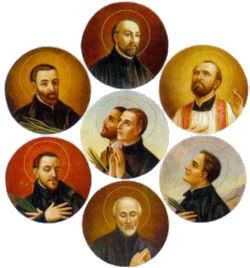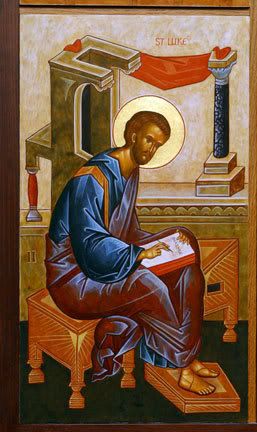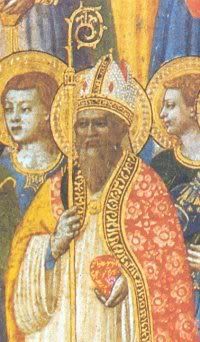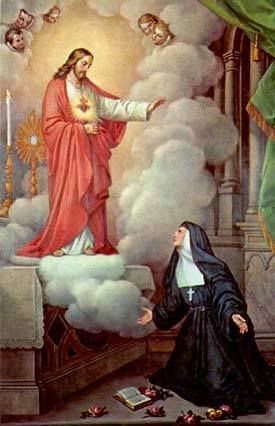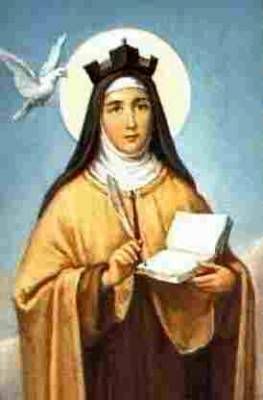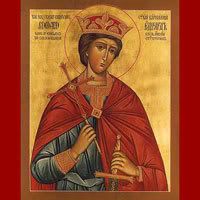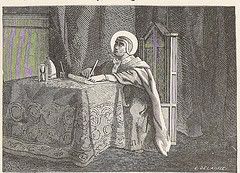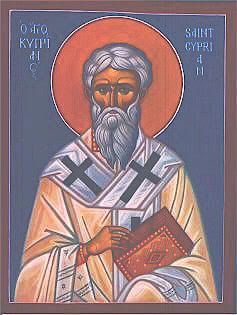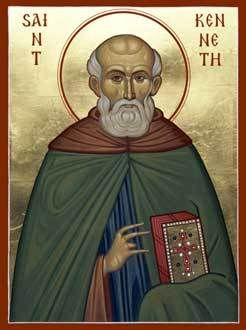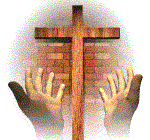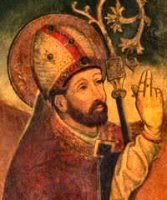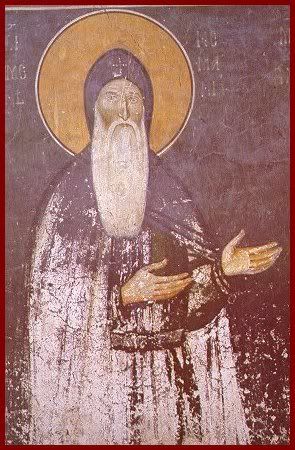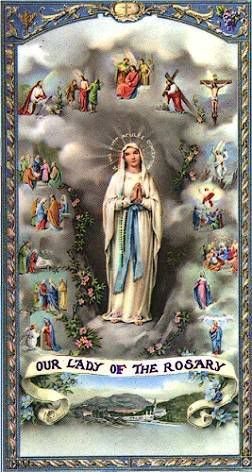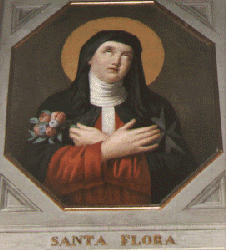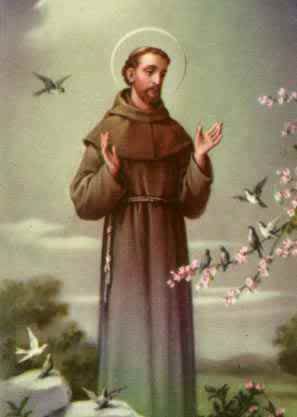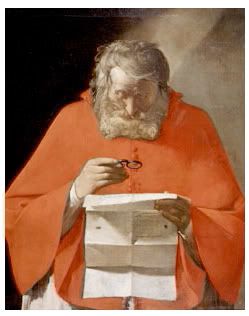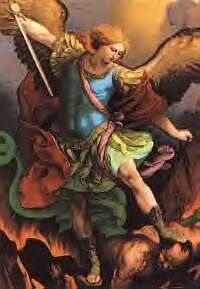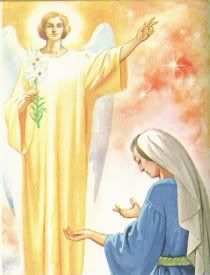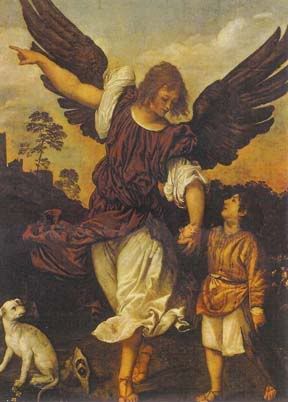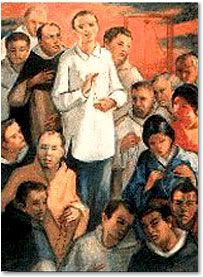OCTOBER 6
The current Roman calendar lists a saint and a blessed on October 6. Their stories are briefly presented here one after the other.
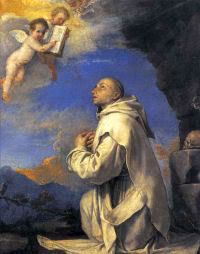
ST. BRUNO
Bruno was born around 1030. This founder of the Carthusian order of monks was at first not a hermit at all. For eighteen years he was a professor of theology in his own country of France. He tried his best to bring his students closer to God. Then he was given an important position in the diocese of Rheims.But Bruno was not impressed with the honors or frightened by responsibilities. He became aware that his heart was longing to be alone with Jesus. St. Hugh of Grenoble gave Bruno and his friends a hidden desert land called Chartreuse. There they built a church and little huts to live in. This was the beginning of the Carthusian order. They were very happy there, working their fields, fasting and praying, hidden in God.After six years, however, Pope Urban II, one of Bruno's former students, required a great sacrifice of him. He asked him to go to Rome to be his advisor. It broke the saint's heart, but he obeyed. He left one of the monks in charge at Chartreuse. Bruno served Pope Urban II well. Then finally he was allowed to live his monk's life nearer to Rome. So with new disciples, Bruno began all over again in Calabria, Italy.As we know by his letters, St. Bruno was always a cheerful, active man. He did not want to see any of his monks sad. He describes their hard life in delightful expressions. Bruno urged a close friend to come see for himself.St. Bruno died in 1101. His order continues today. It is the only religious order in the Church that has never had to be reformed. The followers of St. Bruno keep his loving, self-sacrificing spirit alive.
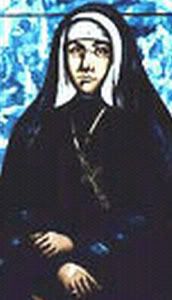
BLESSED MARIE ROSE DUROCHER
Eulalie Durocher was born in 1811 in Quebec, Canada. She was the tenth of eleven children. Eulalie's mother died when she was eighteen. Her brother, the pastor of a parish in Beloeil, invited his younger sister to his parish. She became a lay apostle. She took charge of the household duties for her brother, the priest. She also started the first parish sodality in Canada. The thirteen years she was involved in the life of the Church and the parish were preparing her for a special work for God.In 1843, when Eulalie was thirty-two, the bishop of Montreal asked her to begin a very special mission. Eulalie started a new religious order of women called the Sisters of the Holy Names of Jesus and Mary. Their particular work for Jesus would be to educate the poorest and most neglected children. Eulalie became Mother Marie Rose. Others followed this generous woman. They, too, believed in the importance of educating children for the love of Jesus.Mother Marie Rose lived only six years after her congregation began. However, she helped her sisters from heaven because the community continued to grow and open new convents. They started a mission in America, too. They went to Oregon in 1859. Today the Sisters of the Holy Names of Jesus and Mary are spread throughout the world.Mother Marie Rose Durocher was declared "blessed" by Pope John Paul II on May 23, 1982.
